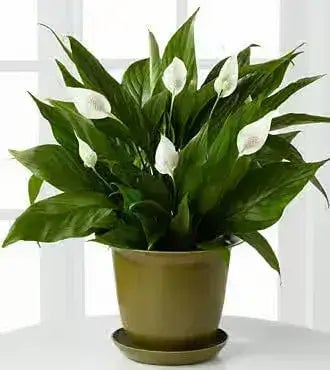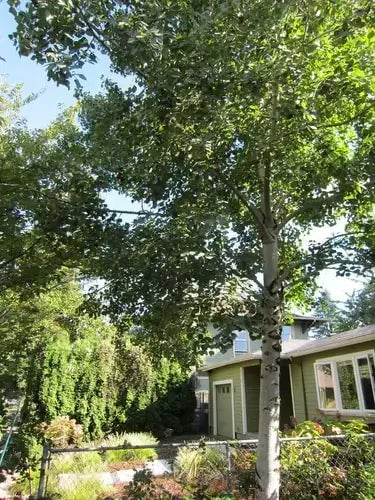Reasons You Should Plan to Plant
In the past few decades, trees have become one of the many horticultural casualties of the excellent housing spread.
Suburban developments sprouted seemingly overnight, and while most of them boasted a host of amenities, lovely new dwellings, and even postage-stamp-sized lawns, something was missing. Trees were largely absent—either as preserved old growth specimens or new plantings—but recent research tells an incredible story about the human need for trees. While we could talk only about how they benefit humans and human settlements, trees also offer a host of other positive offerings for the ecosystem. Wait, what was that about studies?
Physical and Psychological Benefits
Beyond the politics of climate change, objective data collected by NOAA indicate that our planet is in the midst of climate change directly associated with rising levels of greenhouse gasses. Whether you agree with the point that human activity is involved in this climatic shift or not, everyone agrees that trees love carbon dioxide. They need it to complete the process of photosynthesis, and the byproduct of this action is oxygen. While each tree species varies, according to preliminary calculations, a mature specimen consumes as much as 48 pounds of oxygen yearly, producing ample oxygen to sustain two adult humans. That’s pretty substantial, but the good news doesn’t end there.
The preliminary findings of several studies indicate that the presence of trees in a living environment reduces stressors and psychological burdens. While there’s still quite a bit more research to be done in this area, the effects, whatever their cause, are worth noting. Reduced blood pressure, improved mood and immune function, better sleep and more energy, and even an increased rate of wound healing are all essential benefits of spending time among trees.
Income Inequality and Arboriculture
These data are compelling reasons to plant trees wherever possible, but a rather exciting trend may offer more motivation for arboriculture. One analysis of several conducted in the past five years has shown that income inequality within the built environment—mainly entirely urban areas—can be directly correlated to the presence of trees. In spaces that lacked them, intense poverty was often present and could be readily correlated to a unique phenomenon in the United States—the Food Desert. This term describes areas where access to fresh food and basic nutritional needs are often absent or restricted. Would this trend shift if gardens and trees were planted in these areas? The data suggests as much.
The Need to Know
If you’re interested in planting trees on your property, consider several points before you begin. Take a few moments to assess the following list and conduct any research you feel is needed to make the right choice.
What is the climate in which you live? Are there trees that flourish more than others? Look at the hardiness zones to narrow your search.
On your property, is there sufficient space clear from pipes and buried electrical lines to permit tree growth? Check with your local utility providers.
If you live in an apartment or your property is unsuited to planting, which species make attractive container trees? Assess how much sunlight your property receives.
When you’re ready to buy—the late fall being a great time to plant trees—get in touch with a nursery. Much as in any aspect of life, specialists are the best people to consult. Nurseries make it their business to know everything about the cultivation and care of plants. They have the resources to invest in the best techniques and tools, which means trees procured from them are most likely to be healthy and beautiful.
They specifically cultivate and nurture young trees—which grow more rapidly once planted than older individual specimens after transplant. They will be able to offer information and advice on how you can best foster a beautiful and beneficial tree or grove just beyond your window. Why wait? Good health for you and the environment is nearer than you think.
Why Trees Are Important
Trees serve an essential function that cannot be replaced in maintaining life on Earth. Since their inception millions of years ago, trees have adapted together with numerous species, and their structural presence supports a variety of ecosystems. The essential nature of trees is seen through their roles in producing breathable oxygen while protecting soil from erosion and creating habitats for numerous living organisms. Beyond their ecological utility, trees embody deep cultural and historical meaning as living representations of growth and strength. Realizing trees' importance enables us to prioritize their protection and sustainable management.
Trees produce essential oxygen that sustains aerobic life forms at their core biological function. The photosynthesis process enables trees to eliminate carbon dioxide from the atmosphere while they generate oxygen, which assists in atmospheric regulation and climate change mitigation. Trees act as natural air cleaners by capturing pollutants and particles on their leaves and bark. The improvement of general air quality benefits human health and well-being.
Trees are essential in shaping local and global climate conditions beyond their air purification capabilities. Extensive forested areas help maintain temperature stability because they absorb and store carbon. Tree canopies create shadows and retain moisture on the ground, which contributes to controlling local temperature and humidity. Trees play a critical role in urban microclimate regulation because their cooling effects reduce air conditioning needs during the summer months. Trees lessen the urban heat island effect to establish more healthy and comfortable living environments for humans.
The relationship between trees and water is equally important. Tree roots stabilize soil, preventing erosion while simultaneously enabling rainwater absorption. This process prevents floods while contributing to the replenishment of groundwater reserves. Through their natural filtration capabilities, trees purify water, enhancing water quality in streams and rivers. Healthy tree cover is crucial in balancing water cycles and reducing natural disaster risks in regions that face drought or heavy rainfall conditions.
Trees also contribute immensely to biodiversity. A variety of plants and animals find their homes in forests because they rely on tree cover for shelter, food, and places to reproduce. Trees function as essential migratory paths, helping species move while maintaining genetic diversity and population robustness. Smaller understory plants receive protection from trees, which regulate light levels and maintain stable temperatures. The loss of large trees triggers ecosystem failure, which highlights their fundamental role.
Trees have formed an integral part of human cultural identities throughout centuries. Some trees hold sacred or symbolic meanings for various communities, resulting in their significant presence in folklore, mythical tales, and artistic expressions. Trees function as common gathering spots and prominent landmarks, which help form the cultural identity of towns and villages. Amidst growing urban development, people find comfort in wooded areas, parks, and gardens because these spaces provide beneficial psychological and emotional experiences. People experience reduced stress and improved mood while building natural connections while spending time among trees.
Trees are essential components of economic activities. Sustainable forestry and agroforestry methods enable the production of lumber and paper alongside other materials without harming natural ecosystems. Woodlands that receive proper management serve as a sustainable economic resource for local populations while they sustain biodiversity and essential ecosystem functions. Urban tree planting and maintenance lead to higher property values and tourism growth because visitors and businesses find green streets lined with trees more appealing.
Trees are essential partners in our shared mission to preserve and support life throughout our planet. They function as climate stabilizers and biodiversity supporters while serving industrial material needs and sustaining cultural traditions. Trees enhance environmental quality and human well-being through their presence. Preserving trees is the most impactful strategy to protect Earth's future for coming generations.
Read more

Fan clubmoss goes by several names, most of which compare its appearance to something else. Common names include crowsfoot and ground cedar, and it has also been referred to as bear's paws. Its bot...

Indoor plants can make office space more appealing and healthy. Most of the offices are generally centrally air-conditioned without any proper air ventilation or windows. The closed atmosphere can ...


